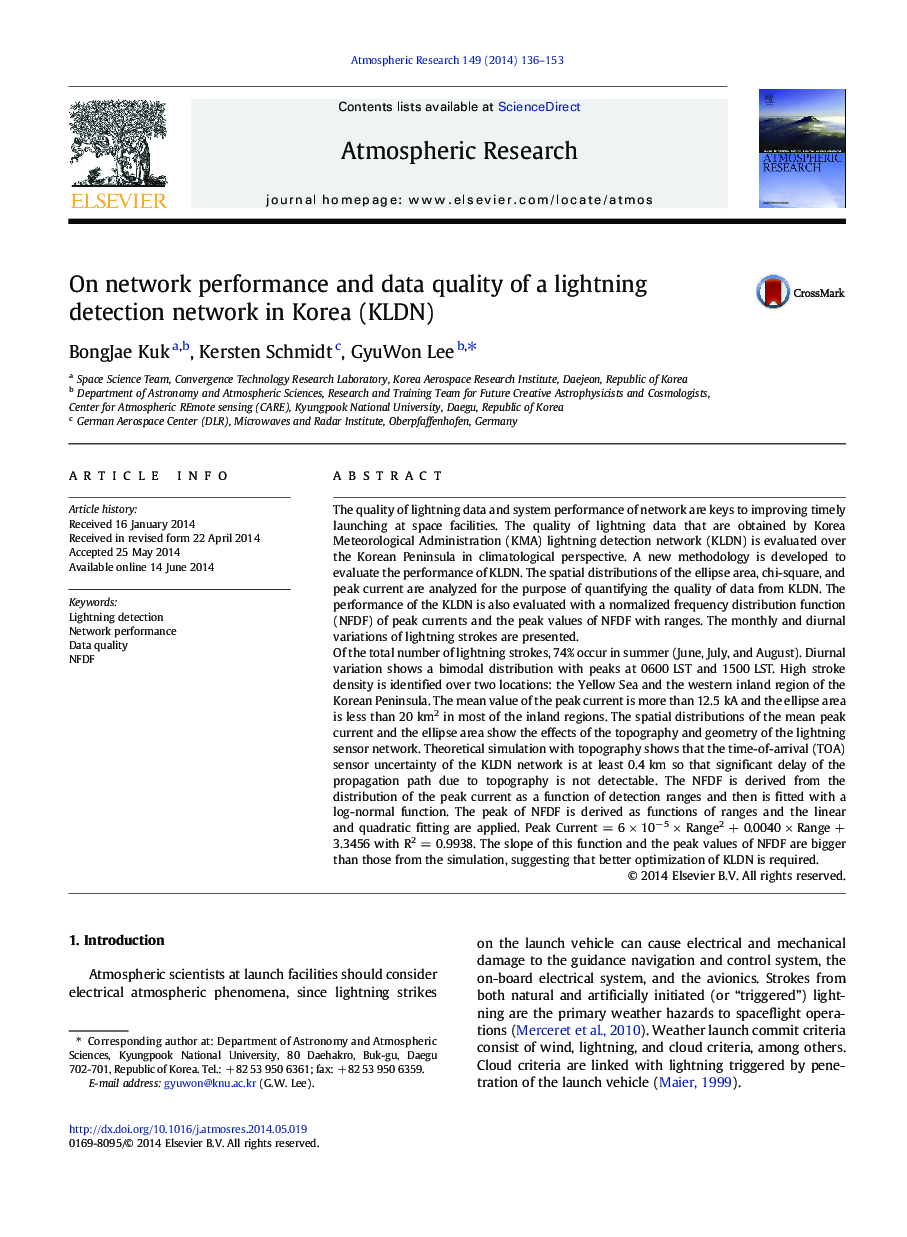| Article ID | Journal | Published Year | Pages | File Type |
|---|---|---|---|---|
| 6343521 | Atmospheric Research | 2014 | 18 Pages |
Abstract
Of the total number of lightning strokes, 74% occur in summer (June, July, and August). Diurnal variation shows a bimodal distribution with peaks at 0600 LST and 1500 LST. High stroke density is identified over two locations: the Yellow Sea and the western inland region of the Korean Peninsula. The mean value of the peak current is more than 12.5 kA and the ellipse area is less than 20 km2 in most of the inland regions. The spatial distributions of the mean peak current and the ellipse area show the effects of the topography and geometry of the lightning sensor network. Theoretical simulation with topography shows that the time-of-arrival (TOA) sensor uncertainty of the KLDN network is at least 0.4 km so that significant delay of the propagation path due to topography is not detectable. The NFDF is derived from the distribution of the peak current as a function of detection ranges and then is fitted with a log-normal function. The peak of NFDF is derived as functions of ranges and the linear and quadratic fitting are applied. Peak Current = 6 Ã 10â 5 Ã Range2 + 0.0040 Ã Range + 3.3456 with R2 = 0.9938. The slope of this function and the peak values of NFDF are bigger than those from the simulation, suggesting that better optimization of KLDN is required.
Related Topics
Physical Sciences and Engineering
Earth and Planetary Sciences
Atmospheric Science
Authors
BongJae Kuk, Kersten Schmidt, Gyu Won Lee,
